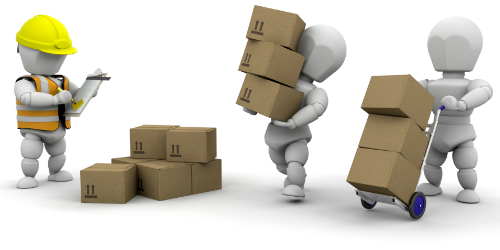Material Equipment Handling

Almost any kind of task, involves some kind of lifting or moving of items. These can be items that are easily moved by hand, or other items that require specialized machinery to move.
Moving or carrying items of a size and weight that are within the capability of one or two persons require proper lifting technique to prevent injury. Training for proper lifting technique without mechanical assistance is usually given as part of an ergonomics or other safety program. Injuries resulting from improper lifting are mostly soft tissue injuries affecting muscles, ligaments, nerves and tendons.
Moving larger or awkward objects with cranes, hoists or forklifts presents its own set of hazards and requires a separate set of skills and training depending on the mechanical device used. The most prevalent use of mechanical devices for material handling is in construction or building servicing and maintenance, but there are other workplaces where these devices are in frequent use such as warehouses, healthcare, transportation, agriculture, vehicle repair, and manufacturing facilities.
Employers need to evaluate the hazards and choose the best equipment and method to perform each task. Employees also need to evaluate the task, understand the hazards, the scope of the task, and the proper method to accomplish it. Many material handling tasks involve the use of both lifting and carrying and equipment to perform the lift.
To get more information on the applicability of material handling safety programs for a specific County operation please contact the corresponding departmental Safety Coordinator.
For further information on specific regulatory guidelines please refer to the link(s) below: